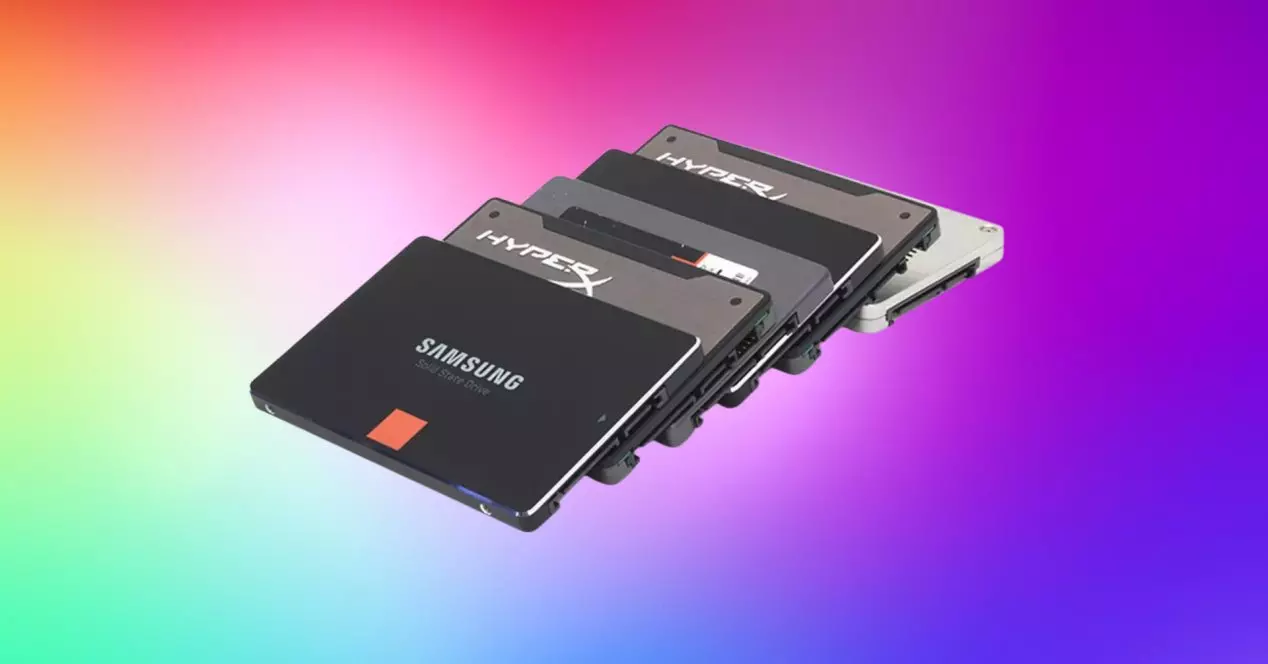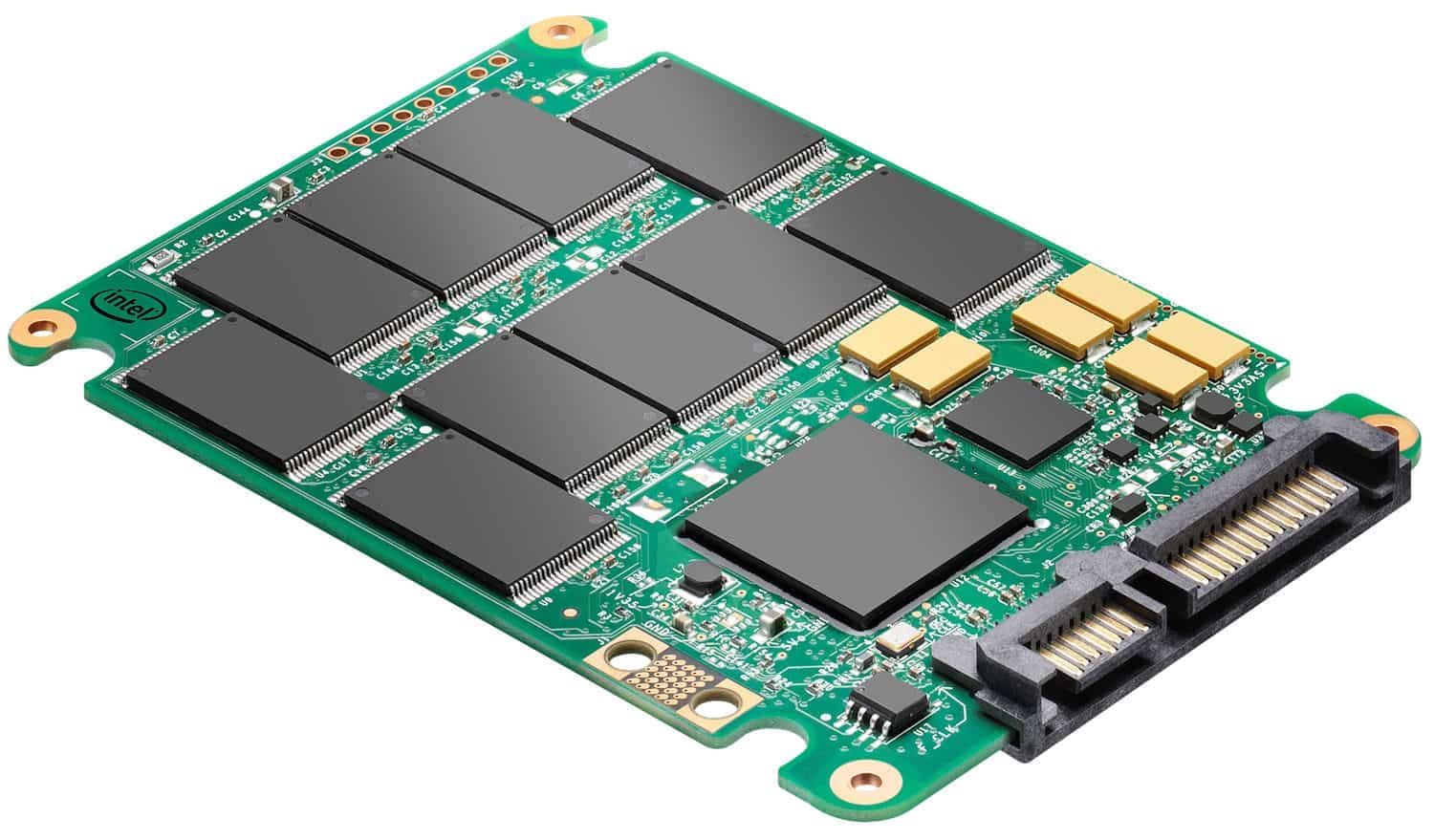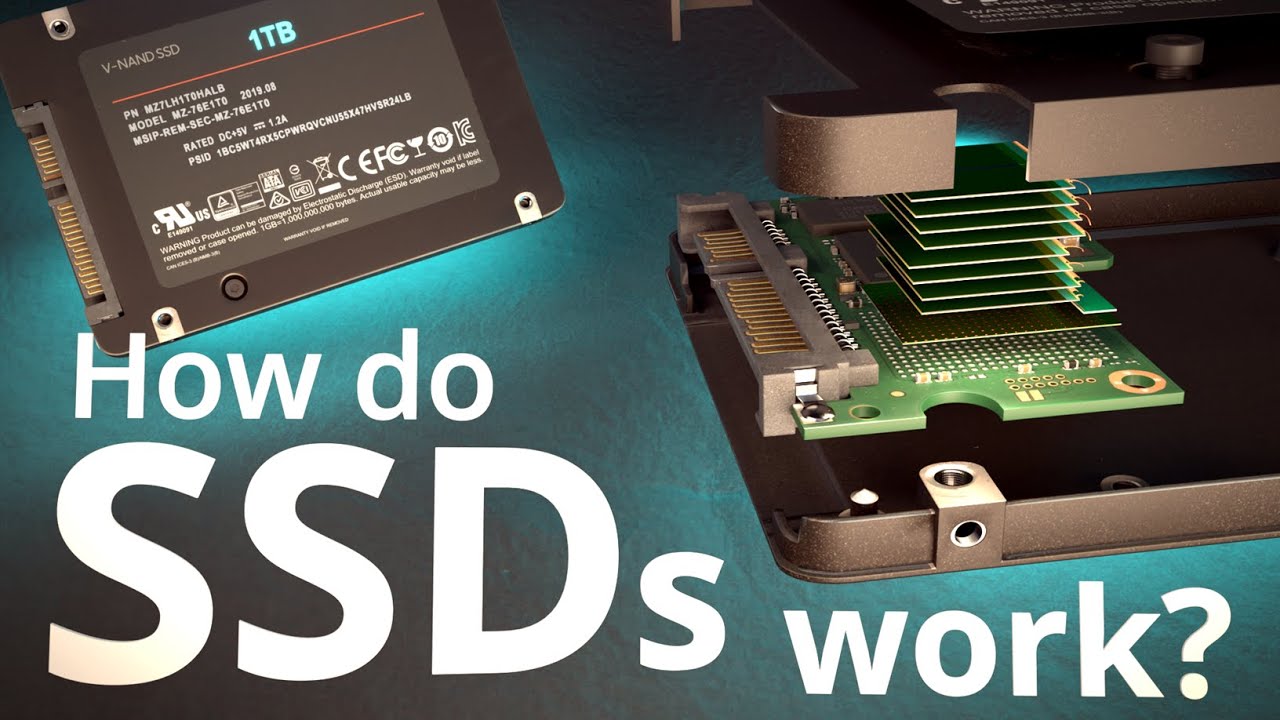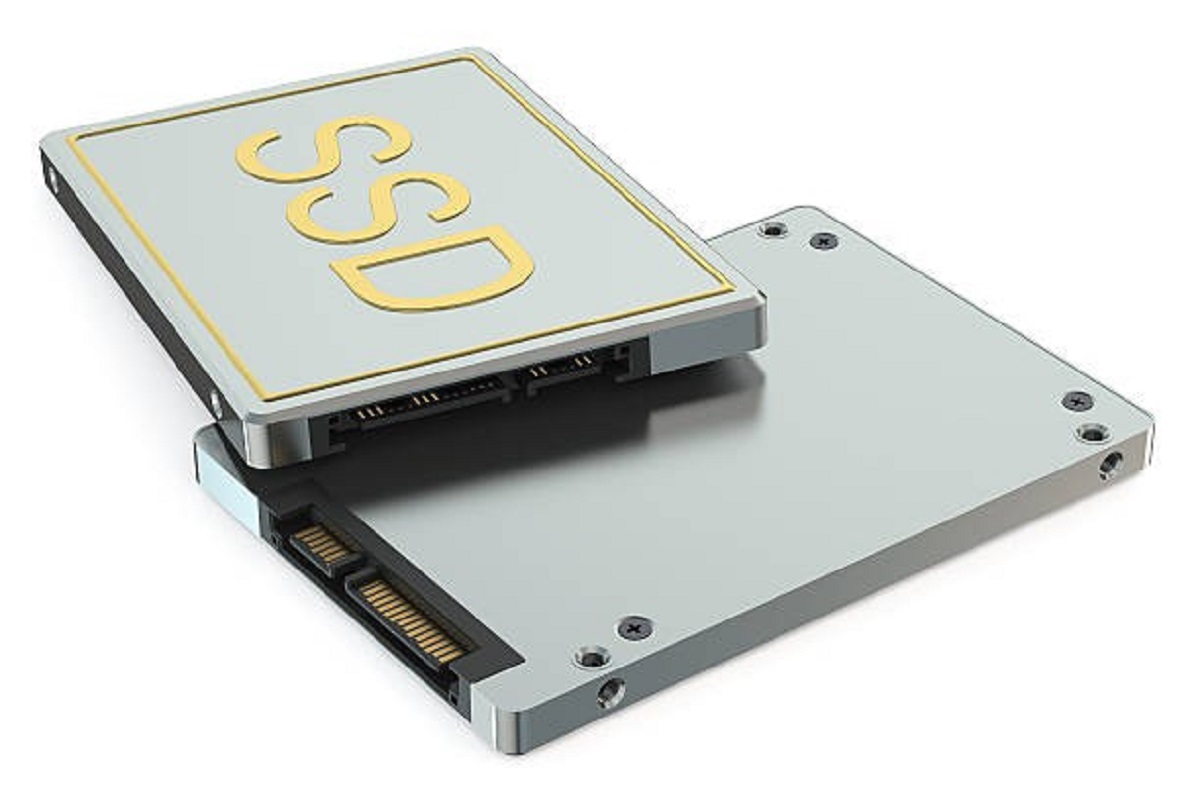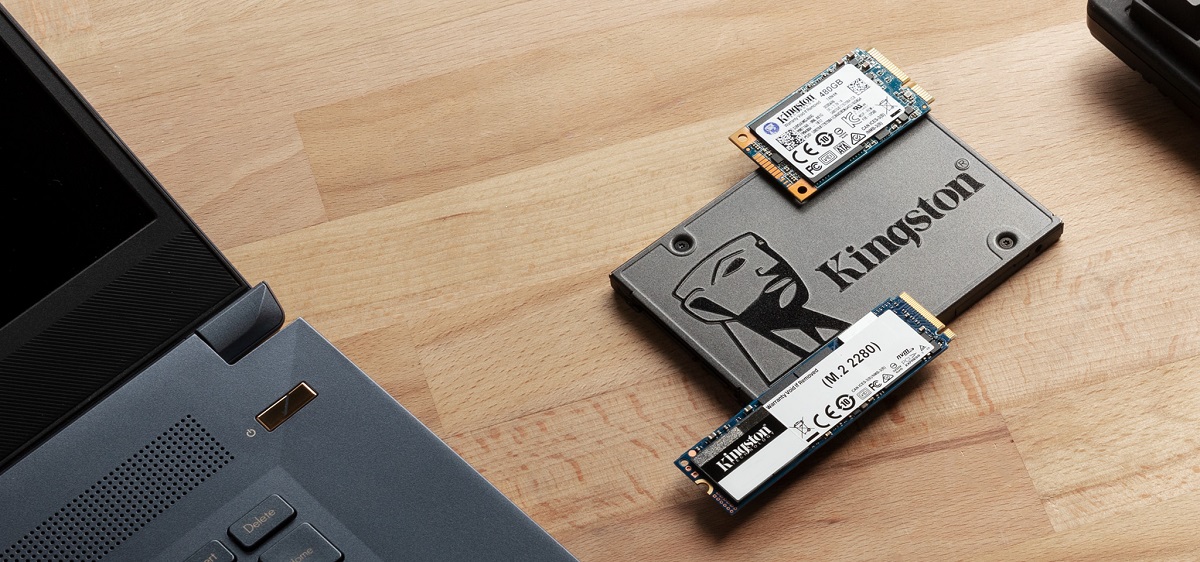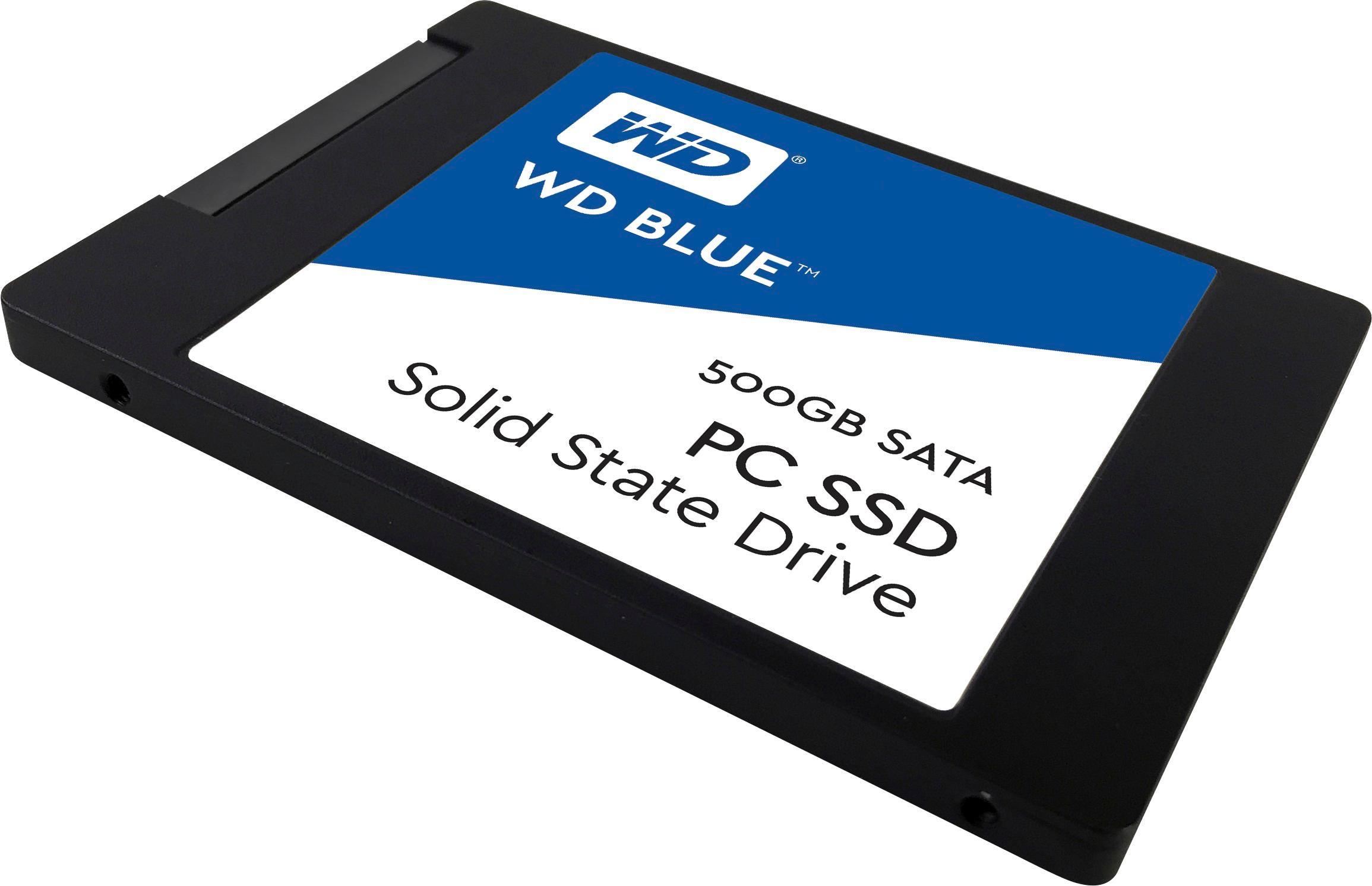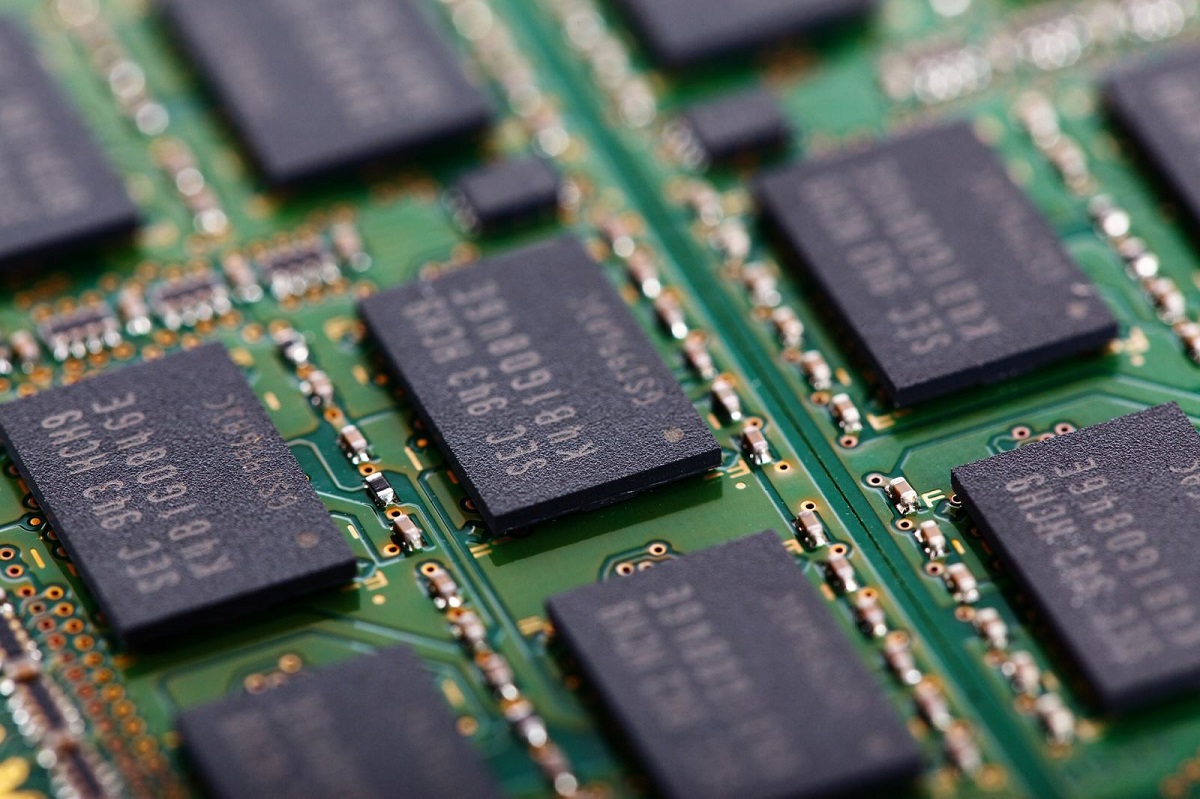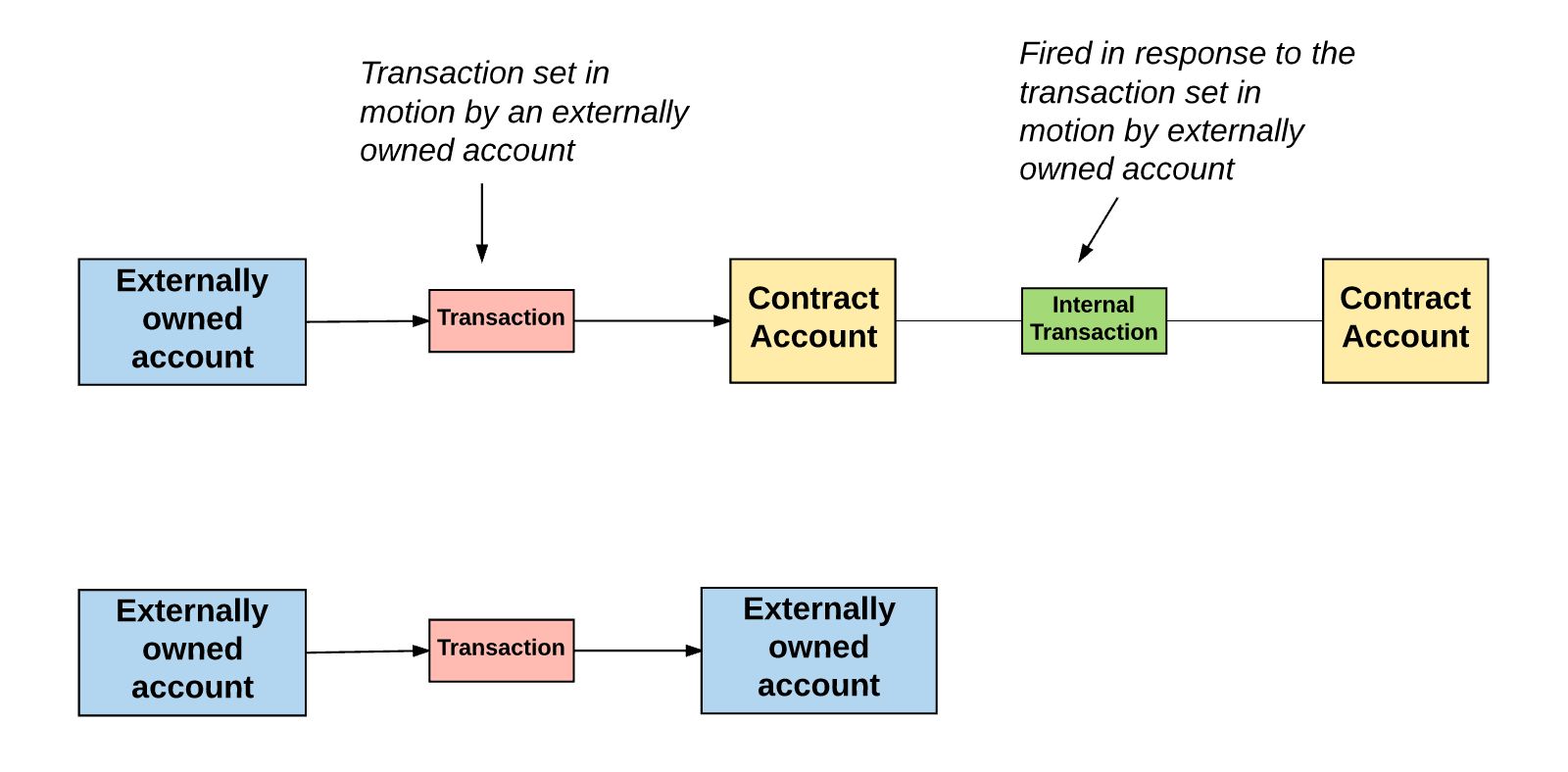Introduction
Welcome to the world of solid state drives (SSDs), where speed, efficiency, and reliability are paramount. In the digital age, the need for fast and reliable storage solutions has become increasingly important. SSDs have emerged as the go-to choice for high-performance data storage due to their numerous advantages over traditional hard disk drives (HDDs). However, what sets SSDs apart from their mechanical counterparts is the technology used to ensure efficient and reliable data storage and retrieval.
At the heart of this technology is the concept of Logical Block Addressing (LBA). LBA is the method used by SSDs to organize and access data stored on the drive. It provides a logical interface between the computer’s file system and the physical blocks of memory within the SSD. This allows for efficient data management, faster read and write speeds, and extended lifespan of the drive.
In this article, we will delve into the world of logical block addressing on SSDs, exploring the technology and techniques used to assure its efficiency and reliability. We will uncover the vital role of logical block addressing in SSDs and how it contributes to the overall performance and longevity of these storage devices. So, let’s dive in!
Definition of Logical Block Addressing
Before we dive into the inner workings of logical block addressing (LBA) on solid state drives (SSDs), let’s first understand what LBA actually means. In the context of storage devices, LBA refers to the method of addressing and accessing data in a logical and organized manner.
In simple terms, LBA acts as a bridge between the computer’s file system and the physical blocks of memory within the SSD. It assigns a unique address to each block of data stored on the drive, allowing the operating system to easily locate and retrieve the required information.
Instead of using a traditional cylinder-head-sector (CHS) addressing scheme, which was prevalent in older hard disk drives (HDDs), SSDs employ LBA to overcome the limitations of physical disk geometry. LBA provides a simplified and efficient way to access data, regardless of the drive’s physical characteristics.
Each block of data on an SSD is assigned a logical block address, represented by a numeric value. This address serves as a reference to the exact location of the data on the drive. By using LBA, the system can access data without the need to worry about the physical arrangement of the memory cells or the internal architecture of the SSD.
LBA plays a crucial role in ensuring the reliability and performance of SSDs. It allows for efficient allocation of data, enables faster data access times, and facilitates easier management of storage capacity. Furthermore, LBA enables wear leveling, a technique that distributes the write and erase operations evenly throughout the SSD, thereby preventing premature wear on specific blocks and extending the drive’s lifespan.
Now that we have a good understanding of what LBA entails, let’s delve deeper into the technology behind logical block addressing on SSDs and explore the techniques used to ensure its efficiency and reliability.
Understanding Solid State Drives (SSDs)
To grasp the significance of logical block addressing (LBA) on solid state drives (SSDs), it’s important to have a solid understanding of what SSDs are and how they differ from traditional hard disk drives (HDDs).
A solid state drive, or SSD, is a storage device that utilizes NAND flash memory to store and retrieve data. Unlike HDDs, which rely on spinning magnetic disks and mechanical read/write heads, SSDs have no moving parts. This characteristic results in several key advantages, including faster data access, lower power consumption, and increased durability.
SSDs are composed of memory cells that store data in a digital format. These memory cells are arranged in a grid-like structure, with each cell capable of holding multiple bits of information. The organization of the cells and the way data is stored and accessed plays a crucial role in the overall performance and reliability of the SSD.
One of the primary benefits of SSDs is their significantly faster data access speeds compared to HDDs. Traditional HDDs require time for the mechanical components to physically position the read/write head over the desired data location. In contrast, SSDs have near-instantaneous access times, as there are no physical components to move. This leads to quicker system boot times, faster application launches, and improved overall system responsiveness.
In addition to speed, another major advantage of SSDs is their durability. The absence of moving parts means that SSDs are not susceptible to mechanical failures or head crashes, which are common risks associated with HDDs. This makes SSDs highly reliable and more resistant to shock, vibration, and temperature fluctuations.
Furthermore, SSDs offer higher energy efficiency, consuming less power than HDDs. This is especially important for laptops and other portable devices where battery life is a critical factor. The reduced power consumption of SSDs not only extends battery life but also generates less heat, resulting in quieter operation and less strain on the system components.
Overall, SSDs have revolutionized the storage industry by providing faster, more reliable, and energy-efficient storage solutions. Now that we have a solid understanding of SSDs and their advantages, let’s explore the crucial role of logical block addressing in ensuring the efficiency and reliability of these powerful storage devices.
Importance of Logical Block Addressing in SSDs
Logical block addressing (LBA) is a fundamental component of solid state drives (SSDs) that plays a crucial role in the overall efficiency and reliability of these storage devices. Let’s take a closer look at why LBA is so important in the world of SSDs.
Efficient data management is essential for optimal performance in any storage device, and LBA enables exactly that. By utilizing LBA, SSDs are able to organize and access data in a logical and systematic manner. This allows for faster and more efficient data storage and retrieval processes. Instead of relying on physical disk geometry like traditional hard disk drives (HDDs), SSDs use LBA to assign a unique address to each block of data. This eliminates the need for complicated calculations and physical positioning of read/write heads, resulting in significantly faster access times.
Another key aspect of LBA is its role in wear leveling. Wear leveling is a technique that evenly distributes write and erase operations across the memory cells of an SSD. By ensuring that each memory cell is used to a similar extent, wear leveling helps to prevent specific blocks from wearing out prematurely. This not only extends the lifespan of the SSD but also contributes to its overall reliability and data integrity.
LBA also plays a vital role in optimizing storage capacity and facilitating easy management of data. By utilizing LBA, SSDs can efficiently allocate data across the available memory cells, ensuring effective utilization of the available storage space. This helps to avoid fragmentation and maximize the usable capacity of the drive. Additionally, LBA allows for seamless integration with the file system of the operating system, making it easier for the computer to access and manage the stored data.
Furthermore, LBA enables advanced features such as error correction codes (ECC), over-provisioning, and garbage collection. ECC helps to detect and correct errors that may occur during data transmission and storage, ensuring data integrity and minimizing the chances of data corruption. Over-provisioning involves reserving a certain amount of storage space for background processes and wear leveling algorithms, enhancing the overall performance and longevity of the SSD. Garbage collection is a process that manages the reuse of deleted or invalid data blocks, optimizing the available storage space and preventing performance degradation.
In summary, the importance of LBA in SSDs cannot be overstated. It enables efficient data management, faster access times, improved wear leveling, enhanced storage capacity utilization, and seamless integration with the operating system. These benefits contribute not only to the performance and reliability of the SSD but also to the overall user experience. Now that we understand the importance of LBA, let’s explore the technology used to ensure its functionality and efficiency in SSDs.
Technology Used for Logical Block Addressing in SSDs
To achieve efficient and reliable logical block addressing (LBA) on solid state drives (SSDs), several advanced technologies are employed. These technologies work together to optimize data storage and retrieval, enhance wear leveling, improve error correction, and maximize the overall performance of SSDs. Let’s explore some of the key technologies used for LBA in SSDs:
- Flash Translation Layer (FTL): The FTL is a vital component of SSDs that manages the translation of logical block addresses to the physical addresses of the NAND flash memory. It handles tasks such as block allocation, wear leveling, garbage collection, and error correction. The FTL ensures that data is stored and retrieved efficiently, optimizing the overall performance and lifespan of the SSD.
- Wear Leveling: Wear leveling is a technique used by SSDs to distribute the write and erase operations evenly across the memory cells. This helps to prevent certain cells from wearing out before others, maximizing the durability and lifespan of the SSD. Wear leveling algorithms intelligently manage the allocation of data to different memory cells, ensuring that all cells are utilized in a balanced manner.
- Garbage Collection: Garbage collection is a process that manages the reclaiming of deleted or invalid data blocks on the SSD. When a file is deleted or modified, the space it occupied is marked as invalid. Garbage collection reclaims these invalid blocks, making them available for future data storage. By optimizing the storage space and efficiently managing the blocks, garbage collection helps to maintain the overall performance and longevity of the SSD.
- Error Correction Codes (ECC): ECC is an important technology used in SSDs to detect and correct errors that may occur during data transmission and storage. ECC algorithms add extra bits to the stored data, allowing for error detection and correction. This ensures that the data stored in the SSD remains accurate and reliable, minimizing the chances of data corruption or loss.
- Over-provisioning: Over-provisioning involves reserving a certain percentage of the SSD’s storage capacity for internal use. This extra capacity is used for wear leveling, bad block replacement, and other background processes. Over-provisioning enhances the performance, longevity, and reliability of the SSD by providing additional resources for critical operations.
- Trim Command: The trim command is a feature supported by SSDs and operating systems that improves the efficiency of the garbage collection process. When a file is deleted or modified, the trim command informs the SSD which blocks are no longer in use. This allows the SSD to proactively release these blocks and optimize the storage space, preventing performance degradation and enhancing overall SSD performance.
- Read Disturb Management: Read disturb is a phenomenon in which accessing a certain memory cell causes unintentional alterations to the adjacent cells. SSDs employ read disturb management techniques to mitigate the effects of read disturbs, ensuring data integrity and preventing read errors. These techniques include periodic refresh operations and sophisticated read algorithms.
- Write Amplification: Write amplification is a measure of how much additional data is written to the SSD beyond what the user intended to write. SSDs employ various techniques to minimize write amplification, such as optimizing writes, grouping small writes into larger blocks, and implementing efficient error correction algorithms. Minimizing write amplification helps to prolong the lifespan of the SSD and maintain its performance over time.
These technologies work in tandem to ensure efficient and reliable logical block addressing in SSDs. They enhance data storage and retrieval, optimize wear leveling, improve error correction, and maximize the overall performance and durability of SSDs. By utilizing these advanced technologies, SSDs continue to evolve and deliver unmatched performance and reliability in the realm of data storage.
Flash Translation Layer (FTL)
The flash translation layer (FTL) is a crucial component of solid-state drives (SSDs) that plays a pivotal role in efficient logical block addressing (LBA) and overall performance optimization. The FTL acts as a bridge between the file system and the physical NAND flash memory, ensuring seamless data storage and retrieval.
One of the primary tasks of the FTL is to manage the translation of logical block addresses used by the computer’s file system into physical addresses within the NAND flash memory. This translation is necessary because the internal organization of the NAND flash memory differs from the logical block addresses used by the operating system. The FTL enables the operating system to access stored data by automatically mapping the logical addresses to the physical memory cells.
Another critical responsibility of the FTL is wear leveling. Wear leveling is essential to prevent certain memory cells from wearing out prematurely due to excessive write and erase operations. The FTL evenly distributes these operations across the entire memory, ensuring that each memory cell is utilized in a balanced manner. By doing so, wear leveling extends the lifespan of the SSD and optimizes its performance by preventing degradation of specific cells.
The FTL also incorporates garbage collection as part of its operation. Garbage collection is a process that identifies and reclaims invalid or deleted data blocks, making space available for new data storage. The FTL performs garbage collection based on algorithms that determine which blocks are eligible for reclamation and then compacts or consolidates the valid data into fewer blocks. This process helps to optimize the storage capacity, prevent fragmentation, and maintain the overall performance of the SSD.
In addition to wear leveling and garbage collection, the FTL also handles error correction codes (ECC). ECC algorithms are utilized by the FTL to detect and correct errors that may occur during data transmission and storage. These algorithms add extra bits to the stored data, allowing for error detection and correction during read operations. By implementing ECC, the FTL ensures data integrity and minimizes the chances of data corruption or loss.
The FTL further optimizes SSD performance by implementing various caching mechanisms. These mechanisms, such as read-ahead caching and write buffering, enhance the speed of data access and management. Read-ahead caching involves retrieving and storing data in advance, anticipating upcoming read requests and reducing latency. Write buffering, on the other hand, temporarily stores incoming write requests and optimizes their sequencing, reducing write amplification and maximizing sequential write performance.
Overall, the flash translation layer is a critical technology used in SSDs to ensure efficient logical block addressing, wear leveling, garbage collection, error correction, and performance optimization. It plays a vital role in maximizing the longevity, reliability, and overall performance of SSDs, making them a highly efficient and reliable storage solution in the modern digital world.
Wear Leveling
Wear leveling is a vital technology employed in solid-state drives (SSDs) that helps to ensure the even distribution of write and erase operations across memory cells, maximizing the longevity and performance of the drive. This technique plays a crucial role in optimizing the reliability and lifespan of SSDs by preventing specific cells from wearing out faster than others.
Flash memory cells have a limited number of write and erase cycles before they become unreliable. Wear leveling is implemented to mitigate the uneven wear that can occur when certain blocks of memory are subjected to more write or erase operations than others. By distributing these operations more evenly, wear leveling helps to extend the lifespan of the SSD.
There are various algorithms and techniques used for wear leveling in SSDs. One common approach is dynamic wear leveling, which dynamically tracks the usage of each memory block. When a block is identified as being heavily used, the data is moved to a less-utilized block to balance the wear across all memory cells. This dynamic approach ensures that no specific blocks are subjected to excessive wear, promoting a more even distribution of write and erase operations.
Static wear leveling is another approach used in some SSDs, where blocks are evenly distributed during the manufacturing process. This initial distribution helps to evenly spread out the wear across the memory cells from the beginning. However, as the SSD is used, static wear leveling algorithms may be combined with dynamic wear leveling techniques to further optimize the distribution of write and erase operations.
Other wear leveling techniques include wear leveling by cluster, where multiple memory cells are grouped together as a cluster, and wear leveling by page, where the write and erase operations are distributed at a more granular level within each memory page. These techniques provide further optimization and ensure that wear leveling is efficiently applied at different levels of granularity.
Wear leveling also takes into account factors such as write amplification, data retention, and error correction. By distributing the write and erase operations evenly, wear leveling helps to minimize write amplification, ensuring that unnecessary write operations are avoided and the SSD’s performance is optimized. Additionally, wear leveling facilitates efficient error correction by preventing the excessive wear of specific memory cells that can lead to higher error rates.
In summary, wear leveling is a critical technology used in SSDs to extend their lifespan and maximize their performance. By evenly distributing write and erase operations across memory cells, wear leveling helps to prevent certain blocks from wearing out prematurely. This technology ensures the longevity and reliability of SSDs, making them a dependable storage solution for a wide range of applications.
Garbage Collection
Garbage collection is a vital process used in solid-state drives (SSDs) to manage and reclaim storage space occupied by deleted or invalid data. This process plays a crucial role in maintaining the efficiency, performance, and lifespan of SSDs by optimizing the utilization of available storage capacity.
When files are deleted or modified on an SSD, the space they occupied is marked as invalid. However, simply marking the space as invalid does not immediately make it available for new data storage. This is where garbage collection comes into play.
The garbage collection process in SSDs identifies and reclaims these invalid data blocks, freeing them up for reuse. It involves algorithms that scan the drive to locate blocks that can be safely erased. The identified blocks are then consolidated and their valid data is moved to other blocks. This consolidation process helps to minimize fragmentation and improve the overall performance of the SSD.
One of the key challenges in garbage collection is minimizing the impact on the SSD’s performance. As the amount of invalid data increases, the garbage collection process can introduce overhead and potentially impact the read and write performance of the SSD. To mitigate this, SSDs utilize various techniques to optimize garbage collection operations and minimize performance degradation.
One such technique is known as background or idle-time garbage collection. This approach ensures that garbage collection occurs during periods of low drive activity or idle time. By performing the process in the background, the impact on user-initiated tasks is minimized, resulting in a smoother user experience.
Another technique used in garbage collection is called write-dependent garbage collection. This approach focuses on reclaiming blocks immediately after they have been invalidated. This way, garbage collection processes can take advantage of idle time between successive write operations, reducing the overall impact on drive performance.
SSDs also employ techniques like partial garbage collection, where only a portion of the invalid data is collected during each garbage collection cycle. This helps to distribute the workload across multiple garbage collection cycles, reducing the impact on performance and increasing the efficiency of the process.
In addition to garbage collection, SSDs also leverage techniques like wear leveling, which ensures even distribution of write and erase operations, and the use of over-provisioning, where a certain amount of storage capacity is reserved for the SSD’s internal use. These techniques work together to enhance the performance and longevity of the SSD.
In summary, garbage collection is a crucial process in SSDs that ensures the efficient and effective utilization of storage capacity. By identifying and reclaiming invalid data blocks, garbage collection helps to minimize fragmentation, optimize performance, and extend the lifespan of SSDs. The implementation of intelligent algorithms and techniques ensures that garbage collection is carried out without unduly impacting the performance of the SSD.
Error Correction Codes (ECC)
Error Correction Codes (ECC) are a critical component of solid-state drives (SSDs) that ensure the integrity and reliability of data storage. ECC is a technology used to detect and correct errors that may occur during data transmission and storage, helping to maintain data accuracy and prevent data corruption in SSDs.
SSDs store data as electrical charges in memory cells, and these charges can be susceptible to various types of errors, such as bit flips or corruption due to electrical noise or other environmental factors. ECC algorithms are employed to add additional bits to the stored data, which serve as redundancy for error detection and correction.
When data is read from an SSD, the ECC algorithm compares the bits in the data with the redundant bits that were stored alongside it. If an error is detected, the ECC algorithm can locate and correct the error by using the redundancy information. By identifying and fixing errors, ECC ensures that the data retrieved from the SSD remains accurate and reliable.
There are different types of ECC algorithms used in SSDs, with some being more robust than others. Reed-Solomon codes, for example, are commonly used for error correction in NAND flash memory. These codes are capable of correcting multiple bit errors and can handle larger data blocks effectively.
ECC codes can correct various types of errors, such as single-bit errors, multiple-bit errors, and burst errors. Single-bit errors occur when a single bit in a data block is flipped or corrupted. Multiple-bit errors involve more than one bit being affected within a data block. Burst errors, on the other hand, occur in consecutive bits within a data block due to physical or electrical interference.
In addition to error correction, ECC also helps to enhance the endurance and reliability of SSDs. By detecting and correcting errors, ECC reduces the chances of data corruption and prevents the accumulation of errors over time. This is especially important in NAND flash memory, where the endurance of memory cells is limited and the risk of bit corruption increases with each program or erase cycle.
It’s important to note that ECC is not a perfect solution and has limitations. While it can detect and correct a certain level of errors, there is a threshold beyond which errors may become uncorrectable. As the density of NAND flash memory increases, the probability of encountering uncorrectable errors also rises. This is why SSD manufacturers continuously refine and improve ECC algorithms to address these challenges and maintain data integrity.
In summary, Error Correction Codes (ECC) are essential in SSDs for detecting and correcting errors that can occur during data transmission and storage. By adding redundant bits to the stored data, ECC algorithms ensure data accuracy and reliability. ECC plays a crucial role in maintaining the integrity of data in SSDs, enhancing their endurance and overall reliability.
Over-provisioning
Over-provisioning is a key technique used in solid-state drives (SSDs) to improve performance, reliability, and lifespan. It involves reserving a certain portion of the SSD’s capacity for internal use, beyond what is presented to the user. This additional space enables the SSD to perform essential background operations and optimize its overall functionality.
The concept of over-provisioning is rooted in the inherent characteristics and architecture of SSDs. By reserving space beyond what the user sees, SSDs gain advantages that help maximize performance and enhance longevity.
One of the primary functions of over-provisioning is wear leveling. Wear leveling algorithms use the reserved space to distribute write and erase operations evenly across the entire memory cells of the SSD. By doing so, over-provisioning prevents specific blocks from enduring excessive wear, extending the lifespan of the drive and improving its reliability. This technique also helps to maintain consistent performance by reducing the likelihood of performance degradation in heavily used areas of the flash memory.
Over-provisioning also serves as a buffer to assist in maintaining performance and efficiency during the garbage collection process. Garbage collection reclaims space occupied by deleted or invalid data blocks, and over-provisioning ensures that these operations can be performed without impacting the user’s experience or slowing down the SSD’s performance.
Moreover, over-provisioning plays a vital role in sustaining the SSD’s performance over time. As an SSD fills up with data, its performance can gradually decrease due to internal operations and the way data is written and erased. The reserved space allows the SSD to have room for small-scale random write operations, which are critical for maintaining consistent performance and preventing write amplification. It helps to minimize the impact of write amplification, where additional data needs to be written to perform internal operations, thus extending the drive’s overall lifespan.
Another aspect of over-provisioning is the provisioning of spare memory cells to replace any defective or worn-out cells. These spare cells are known as “reserved blocks” and are used by the controller to replace blocks that may become unreliable over time. By having reserved blocks available, the SSD can continue to operate reliably and transparently even if some memory cells fail.
While the amount of over-provisioning varies among SSDs, it is typically recommended to reserve around 10-20% of the total capacity for consumer-grade SSDs. High-end enterprise-grade SSDs may have even higher percentages of over-provisioning. The actual allocation of these reserved blocks is managed by the SSD’s controller, utilizing advanced algorithms and techniques to ensure efficient utilization of the reserved space.
In summary, over-provisioning is a crucial technique utilized in SSDs that reserves a portion of the drive’s capacity for internal use. By enabling wear leveling, optimizing garbage collection, sustaining performance, and providing spare blocks for replacement, over-provisioning enhances the overall performance, reliability, and lifespan of the SSD. It is an essential feature that contributes to the exceptional performance and durability of SSDs in various storage applications.
Trim Command
The Trim command is a significant feature available in solid-state drives (SSDs) and operating systems that enhances performance, improves efficiency, and prolongs the lifespan of SSDs. It aids in the effective management of data and storage space by notifying the SSD which blocks of data are no longer in use, allowing for proactive housekeeping operations.
When a file is deleted or modified on a traditional hard disk drive (HDD), the operating system simply marks the space as available for overwrite. However, on an SSD, this process is not sufficient for efficient data management. With the Trim command, the operating system sends a signal to the SSD, indicating which blocks of data are no longer required.
By receiving this information, the SSD can proactively release and consolidate these unused blocks, marking them as available for new data storage. This enables the SSD to perform garbage collection and wear leveling more efficiently, optimizing the storage space and ensuring that it remains in optimal condition for data storage and retrieval.
The Trim command benefits both performance and lifespan. It helps to minimize the performance degradation that can occur over time on a filled SSD by allowing the drive to maintain a uniform level of performance regardless of data fluctuations. With Trim, the SSD can alleviate the need for time-consuming and potentially disruptive housekeeping operations during write operations, resulting in more consistent and reliable performance.
Furthermore, the Trim command plays a vital role in reducing write amplification. Write amplification refers to the phenomenon where an SSD writes more data internally than what is requested by the user. This occurs because the SSD must erase entire blocks of data before writing new information, resulting in unnecessary data movement and decreased efficiency. By informing the SSD of the blocks that can be safely discarded, Trim reduces the need for unnecessary writes and mitigates write amplification, ultimately improving both performance and endurance.
It’s worth noting that the effectiveness of the Trim command depends on proper implementation by both the SSD firmware and the operating system. The SSD firmware must support Trim, while the operating system must correctly issue TRIM commands and effectively communicate with the SSD. Additionally, the file system on the operating system must also support Trim for it to have the desired effect.
Trim is supported in modern operating systems, such as Windows, macOS, and Linux, with automatic Trim functionality enabled by default. However, it’s always advisable to ensure that Trim is enabled for your SSD to fully benefit from its advantages.
In summary, the Trim command is a valuable feature in SSDs and operating systems that enables efficient data management, reduces write amplification, and improves the overall performance and lifespan of SSDs. By proactively guiding the SSD in reclaiming unused storage blocks, Trim ensures optimal performance and longevity, making it a crucial tool in maintaining the efficiency of SSDs in various storage applications.
Read Disturb Management
Read disturb is a phenomenon that can occur in solid-state drives (SSDs) where accessing a certain memory cell can unintentionally alter the adjacent memory cells. This interference can lead to potential data corruption or errors. To mitigate the effects of read disturb, SSDs employ techniques known as read disturb management.
Read disturb typically occurs in NAND flash memory cells, which are arranged in close proximity to each other. When a memory cell is read, it can generate electrical charges that can leak into the neighboring cells due to electrical coupling. Over time, this leakage can affect the data integrity of the adjacent cells.
To minimize the impact of read disturb, SSDs utilize read disturb management techniques that implement periodic refresh operations and sophisticated read algorithms. These techniques aim to maintain data integrity and prevent read errors caused by read disturb.
Periodic refresh operations involve periodically rewriting the contents of memory cells to restore their charges. By doing so, the SSD can prevent the degradation of charge levels over time, reducing the chances of read disturb and maintaining accurate data representation within the memory cells. This periodic refresh operation occurs automatically and transparently in the background, ensuring the long-term reliability of the stored data.
In addition to periodic refresh operations, SSDs employ advanced read algorithms that carefully control the read voltages applied to memory cells during read operations. By adjusting the read voltages, SSDs can reduce the electrical coupling effects between adjacent cells, minimizing read disturb issues. These algorithms ensure that the data read from memory cells is accurate and reliable, mitigating the potential for corruption or errors caused by read disturb.
Read disturb management is particularly crucial in SSDs with high data retention requirements and for applications that involve frequent and intensive read operations. By addressing the challenges associated with read disturb, SSDs can ensure the integrity of the stored data and provide reliable performance over extended periods of use.
It is important to note that modern SSDs are designed with built-in mechanisms to effectively manage read disturb, minimizing its impact on data integrity. These mechanisms are developed by SSD manufacturers and incorporate years of research, development, and testing to provide optimal protection against read disturb and ensure the reliability of the SSD.
In summary, read disturb management techniques employed in SSDs play a vital role in mitigating the potential risks associated with read disturb. By implementing periodic refresh operations and advanced read algorithms, SSDs can maintain data integrity, reduce read errors, and ensure reliable performance over time. With these techniques, SSDs can effectively combat the challenges posed by read disturb, making them a dependable and secure storage solution in various applications.
Write Amplification
Write amplification is a critical aspect of solid-state drives (SSDs) that impacts their performance, lifespan, and efficiency. It refers to the phenomenon where additional data is written to the SSD beyond what the user explicitly requests. Understanding and managing write amplification is essential for optimizing SSD performance and longevity.
Write amplification occurs due to the inherent characteristics of NAND flash memory technology and the way SSDs handle data storage. When data is written to an SSD, the controller must erase entire blocks of data before writing new information. This process is known as the write-erase cycle, and it introduces inefficiency and additional data movement.
Write amplification can be a result of various factors, including write operations that modify existing data, garbage collection processes, and wear leveling algorithms. These factors can lead to unnecessary data being written internally, amplifying the actual amount of user-requested writes.
Managing write amplification is crucial for optimizing SSD performance and reducing unnecessary wear on the memory cells. Several techniques and algorithms are employed in SSDs to mitigate write amplification and minimize its impact on performance and durability.
One key technique used to reduce write amplification is the implementation of efficient wear leveling algorithms. Wear leveling ensures that write and erase operations are distributed evenly across memory cells, minimizing the need for excessive write operations in specific blocks. By balancing the wear across the SSD, wear leveling helps to reduce write amplification and prolong the lifespan of the drive.
Garbage collection is another technique used to manage write amplification. When data blocks are deleted or become invalid, the SSD performs garbage collection to reclaim the space and optimize storage availability. By effectively managing garbage collection, SSDs can minimize unnecessary writes and reduce write amplification, improving both performance and longevity.
Error correction codes (ECC) also contribute to mitigating write amplification. ECC algorithms incorporated into SSDs help to detect and correct errors that may occur during write operations. By reducing errors, ECC minimizes the need for additional writes to correct or compensate for the errors, thereby mitigating write amplification.
Advanced algorithms and techniques are continuously developed and refined by SSD manufacturers to further optimize write amplification. These algorithms focus on write optimization, write coalescing, and efficient data placement strategies to reduce unnecessary write operations and maximize the SSD’s performance efficiency.
Reducing write amplification is crucial not only for improving SSD performance but also for ensuring the durability and longevity of the drive. By minimizing the amount of data written beyond user requests, SSDs can prolong the lifespan of the memory cells, reduce wear, and increase overall reliability.
In summary, write amplification is a significant consideration in SSDs that affects performance, lifespan, and overall efficiency. By implementing techniques such as efficient wear leveling, garbage collection management, and error correction codes, SSDs can minimize unnecessary write operations, optimize performance, and enhance the durability of the drive. Addressing write amplification is essential for maximizing the benefits and potential of SSDs as efficient and reliable storage solutions in various applications.
Conclusion
The technology used for logical block addressing (LBA) in solid-state drives (SSDs) is essential for ensuring efficient data storage and retrieval, maximizing performance, and enhancing the lifespan of these storage devices. From the flash translation layer (FTL) to wear leveling, garbage collection, error correction codes (ECC), over-provisioning, the Trim command, read disturb management, and write amplification reduction, each element plays a crucial role in optimizing the functionality and efficiency of SSDs.
LBA, facilitated by the FTL, facilitates the seamless translation of logical block addresses to physical addresses while enabling wear leveling algorithms to distribute write and erase operations evenly across memory cells. Garbage collection processes free up storage space and consolidate invalid data blocks, enhancing performance and preventing fragmentation. ECC algorithms detect and correct errors, ensuring reliable data integrity.
Over-provisioning reserves capacity for internal use, enabling wear leveling, bad block replacement, and other essential background functions. The Trim command proactively informs the SSD about blocks of data that are no longer needed, allowing for efficient garbage collection and optimization of storage space. Effective read disturb management techniques minimize interference between memory cells during read operations, maintaining data integrity.
Write amplification reduction techniques optimize performance and durability by minimizing unnecessary writes and wear on memory cells.
Collectively, these technologies and techniques ensure that SSDs provide efficient, reliable, and long-lasting storage solutions for various applications. By leveraging LBA and implementing advanced functionalities, SSDs are able to surpass the limitations of traditional hard disk drives and offer faster access times, lower power consumption, increased endurance, and improved data reliability.
As the demand for high-speed, reliable storage continues to grow, ongoing advancements in LBA technology will further enhance the capabilities and performance of SSDs. The future of SSDs holds promise for even greater speed, improved endurance, and enhanced reliability, solidifying their position as the preferred choice for data storage in various industries and applications.







